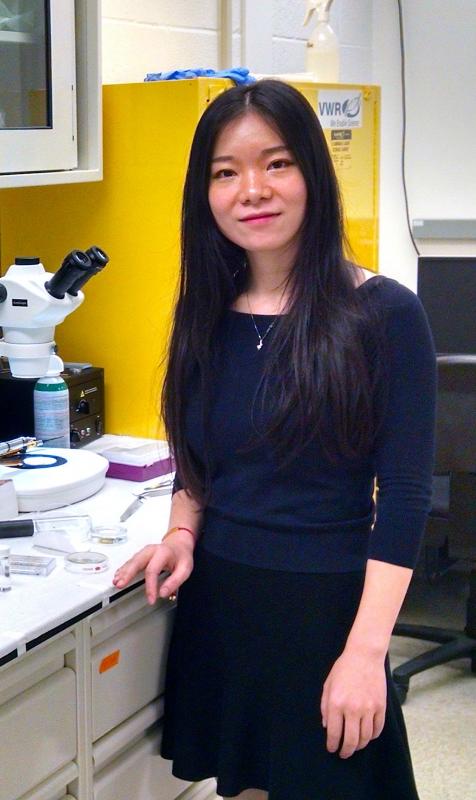
The reaction kinetic model enables us to unravel the nucleation and growth kinetics at the sub-nanometer scale, which are normally not accessible with Liquid Cell Electron Microscopy.
ChBE Ph.D. student Mei Wang - advised by ChBE Assistant Professor, Taylor Woehl - is part of the Nanoscale Assembly and Electron Microscopy Lab on UMD's campus. Currently, the team is developing dark field optical microscopy to enable them to 'see' how nanoparticles behave at the atomic level. Wang served as first author on a paper entitled, "Quantifying the Nucleation and Growth Kinetics of Electron Beam Nanochemistry with Liquid Cell Scanning Transmission Electron Microscopy," published in Chemistry of Materials in November, 2018.
“The reaction kinetic model enables us to unravel the nucleation and growth kinetics, and probes nucleation kinetics occurring at the sub-nanometer scale, which are normally not accessible with Liquid Cell Electron Microscopy (LCEM),” said Wang. “The model should also be sufficiently general to capture the formation kinetics of other metal nanocrystals, since it accounts for specific aspects of LCEM experiments.”
In the future, the team will be able to use nanochemistry to design experiments to probe and quantify specific material processes involved in NP formation, such as precursor reactions, ligand binding, nucleation and growth.
Wang - originally from Jingzhou, Hubei Province in China - received her Bachelor of Engineering in Applied Chemistry from Chongqing University in 2014, and arrived at UMD the following year. She is on track to complete her Ph.D. in January of 2021.
Top